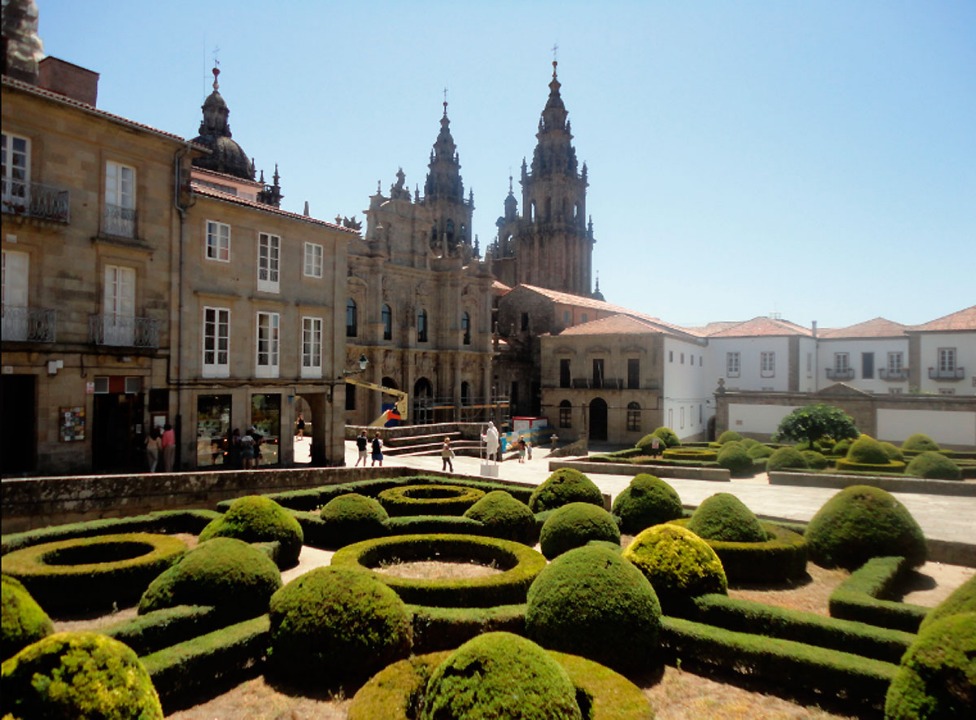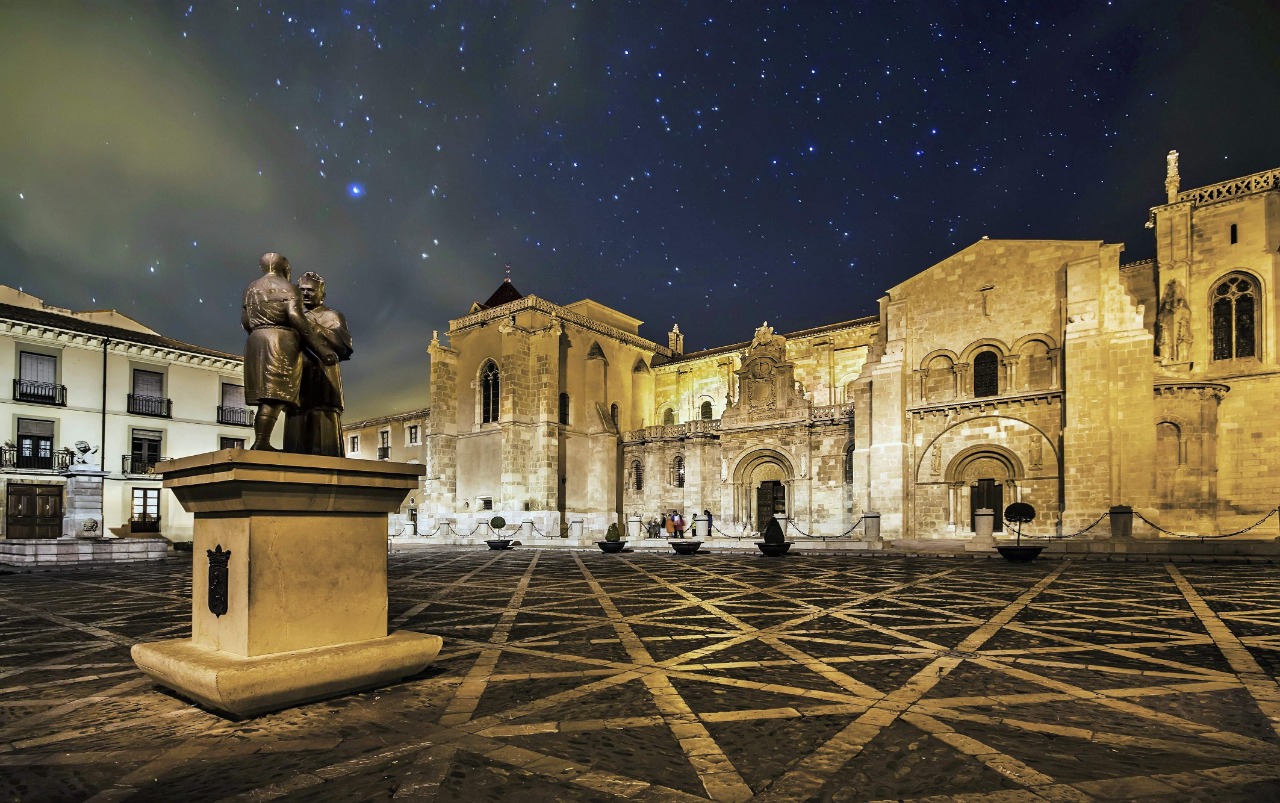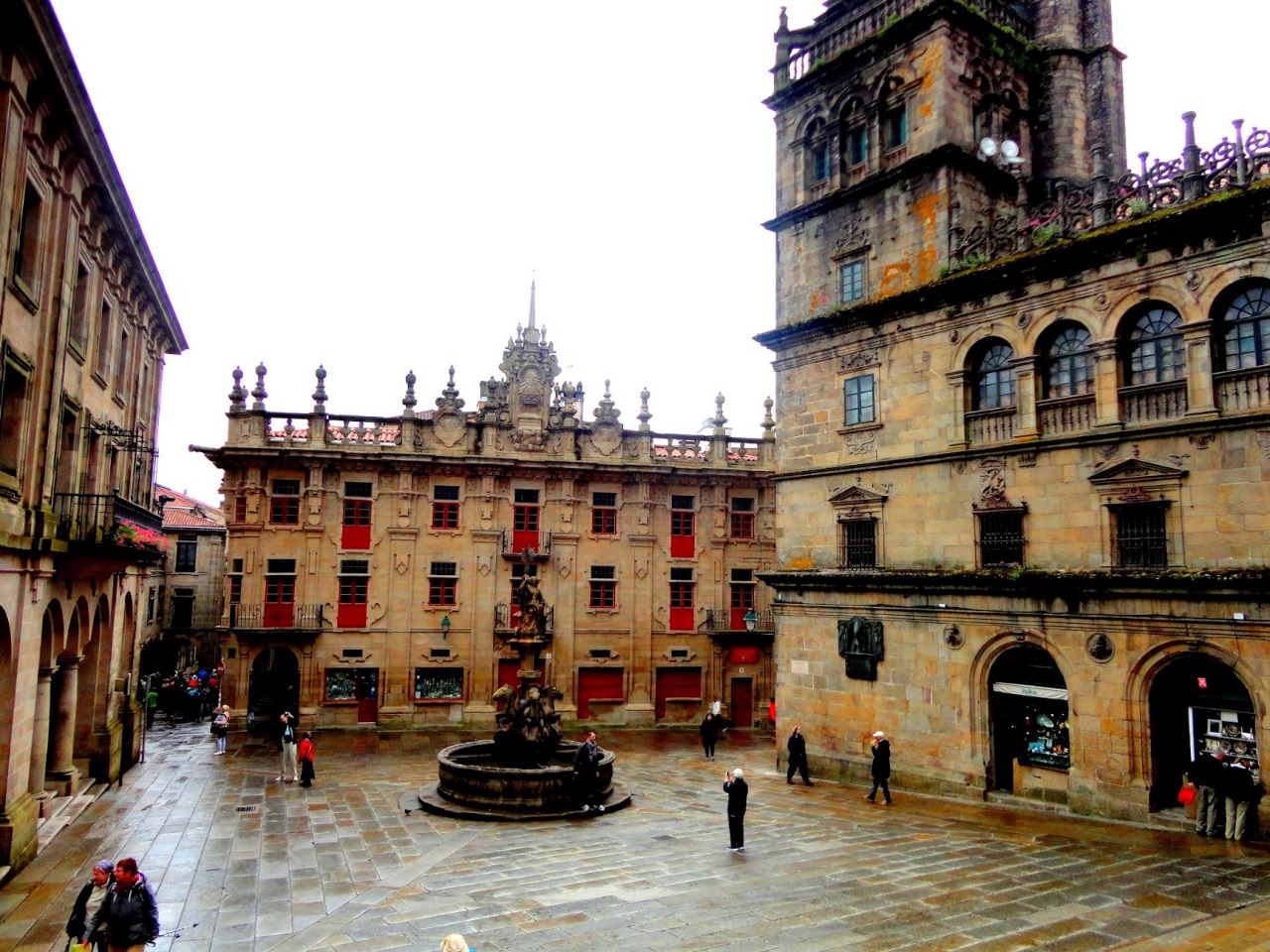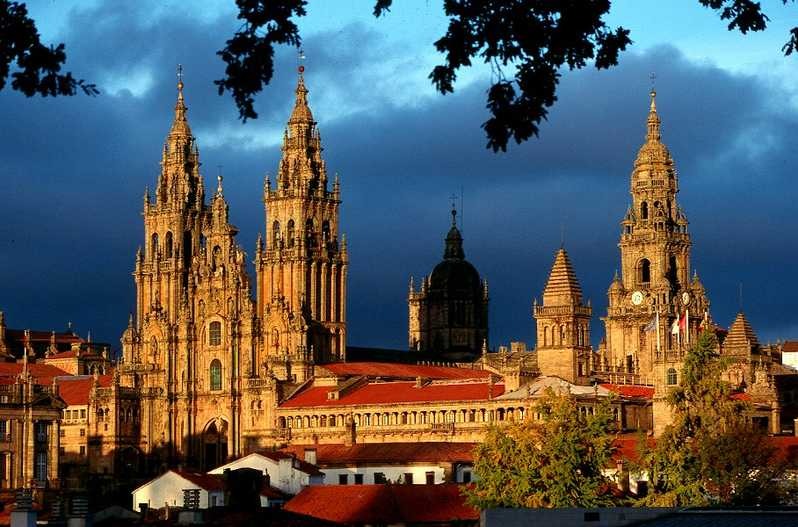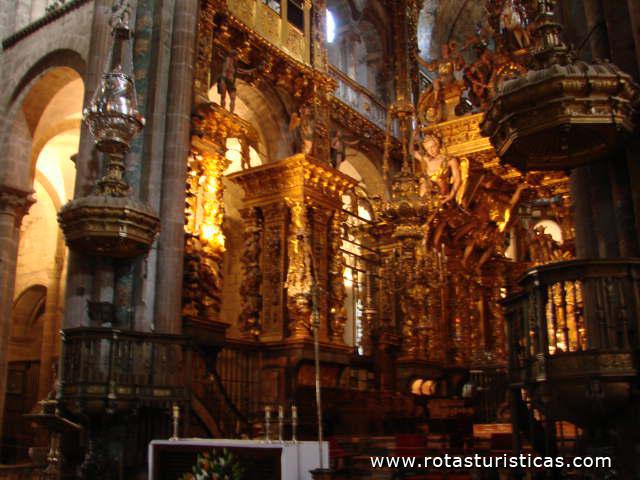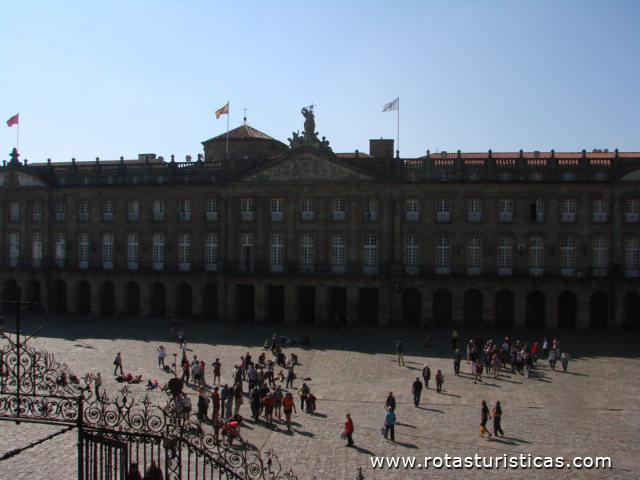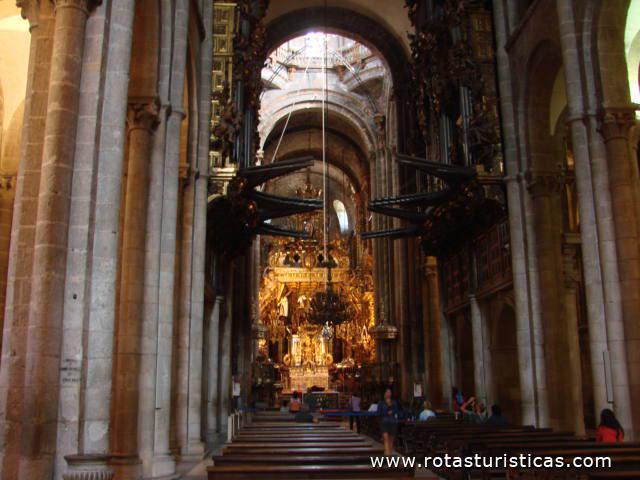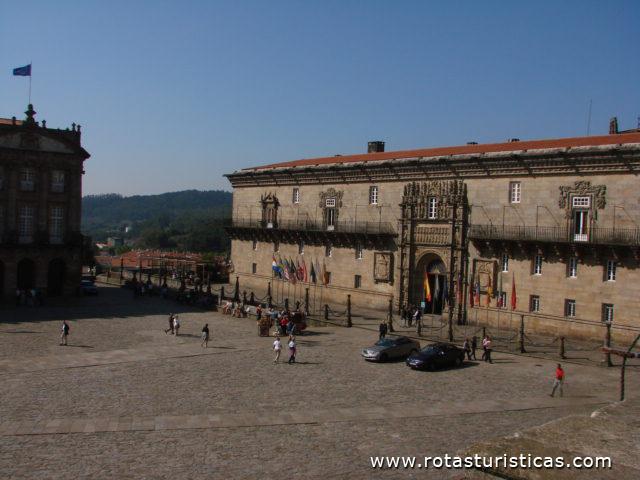Pictures of: Santiago de Compostela
Location map
Airports
Hotels and other Accommodation
What to visit
Where to Eat
Where to have fun
Consulates & Embassies
World Nomads
The Travel Insurance with the largest coverage

The Travel Insurance with the largest coverage

Santiago de Compostela
Santiago de Compostela is a city and municipality in northwestern Spain. It is the capital of the autonomous community of Galicia and is part of the province of A Coruña and the region of Santiago.
It is an internationally famous city as one of the most important Christian pilgrimage destinations in the world, whose popularity is possibly only surpassed by Rome and Jerusalem. Connected to this tradition, which dates back to the founding of the city in the 9th century, stands the Baroque façade Santiago Cathedral, which houses the tomb of Santiago Maior, one of the apostles of Jesus Christ. The visit to this tomb marks the end of the pilgrimage, whose journeys, called the Way of Saint James or the Milky Way, extend throughout Western Europe for thousands of kilometers. Since 1985 its historic center (old town) is included in the list of UNESCO World Heritage. The Road to Santiago was also included in that list in 1993, which had already been classified as the first European cultural route by the Council of Europe in 1987. It was one of the European capitals of culture in 2000.
It is an internationally famous city as one of the most important Christian pilgrimage destinations in the world, whose popularity is possibly only surpassed by Rome and Jerusalem. Connected to this tradition, which dates back to the founding of the city in the 9th century, stands the Baroque façade Santiago Cathedral, which houses the tomb of Santiago Maior, one of the apostles of Jesus Christ. The visit to this tomb marks the end of the pilgrimage, whose journeys, called the Way of Saint James or the Milky Way, extend throughout Western Europe for thousands of kilometers. Since 1985 its historic center (old town) is included in the list of UNESCO World Heritage. The Road to Santiago was also included in that list in 1993, which had already been classified as the first European cultural route by the Council of Europe in 1987. It was one of the European capitals of culture in 2000.
Tourism
Fun, happy and jovial, the university environment of Santiago is contagious with joy and vitality. Students attending university each year give the city a special atmosphere. Be careful not to miss the nightlife in Santiago, when its pubs, bars and clubs open their doors. The city never sleeps. The areas of the city where people go out are proof of this, with a variety of night clubs and bars with terraces for all tastes.
Art, culture, and nature also exist in Santiago where there are many parks and gardens, in an intense green, not only inside the city, but also in its surroundings, where mountains and forests with lush vegetation await tourists, creating for example the perfect setting for a variety of sports such as hiking, fishing and golf.
Santiago is not a cultural destination just because of its heritage and monuments but also thanks to its impressive year-round program of events such as music, conferences, theater, cinema, concerts, exhibitions, festivals.
Entertainment and art are always available, in the city's museums and in a number of other venues as well.
Feel the festive spirit of the capital of Galicia. Traditional festivals, where customs and folklore play an essential role. Music, color, dance and games fill the streets and squares on the most emblematic dates. Above all, however, the Festivities in honor of the Apostle Santiago are worthy of note in July and have the designation of International Tourist Interest.
When visiting Santiago, make the most of your visit to discover Galicia, a fascinating region in the north of Spain, if you wish to return.
Art, culture, and nature also exist in Santiago where there are many parks and gardens, in an intense green, not only inside the city, but also in its surroundings, where mountains and forests with lush vegetation await tourists, creating for example the perfect setting for a variety of sports such as hiking, fishing and golf.
Santiago is not a cultural destination just because of its heritage and monuments but also thanks to its impressive year-round program of events such as music, conferences, theater, cinema, concerts, exhibitions, festivals.
Entertainment and art are always available, in the city's museums and in a number of other venues as well.
Feel the festive spirit of the capital of Galicia. Traditional festivals, where customs and folklore play an essential role. Music, color, dance and games fill the streets and squares on the most emblematic dates. Above all, however, the Festivities in honor of the Apostle Santiago are worthy of note in July and have the designation of International Tourist Interest.
When visiting Santiago, make the most of your visit to discover Galicia, a fascinating region in the north of Spain, if you wish to return.
Gastronomy
In Santiago, gastronomy is an active part of the city's culture. There is a spectacular variety of restaurants, bars and taverns, with prices to suit all budgets - quality is what everyone has in common. Here we eat well, and a lot. Trying the most varied regional products, especially seafood, fish and meat, is to try the existing flavors and want to repeat.
Weather
Santiago de Compostela has a humid oceanic climate with mild temperatures throughout the year, with an annual average of approximately 15 ° C, 8 ° C in winter and 25-27 ° C in summer.
Annual precipitation ranges from 700 to 800 millimeters, concentrating mainly in the winter, being smaller in the autumn and spring.
The factors that most influence the local climate are the relatively long distance from the sea coast, the altitude and the presence of mountain ranges that "fit" the city and its surroundings, which causes that the humidity concentrates and that in the winter they are habitual the cloudy days.
Annual precipitation ranges from 700 to 800 millimeters, concentrating mainly in the winter, being smaller in the autumn and spring.
The factors that most influence the local climate are the relatively long distance from the sea coast, the altitude and the presence of mountain ranges that "fit" the city and its surroundings, which causes that the humidity concentrates and that in the winter they are habitual the cloudy days.
Other tourist destinations in:
Spain
Spain
Other world tourist destinations
Why to book with CLUBE TRAVEL
The best prices
Our partnerships with the world´s largest operators offer research on the best market prices.
More options
At Rotas Turisticos you can book the hotel, buy the air ticket, book the transfer from the airport to the hotel and vice versa, book the local excursions, rent the car, take travel insurance and consult the places to visit and where to go.
Holiday Tips & Destinations
Hundreds of holiday destinations with all the options that allow you to easily choose the destination that best suits your dream vacation.
CLUBE TRAVEL
Links

